Nuevo Leon from 1962-2015
Introduction
Text-to-speech Audio
Images
“Best Mexican Restaurant: Nuevo Leon” provided by Best of Chicago 2014. Retrieved May 28th, 2019.
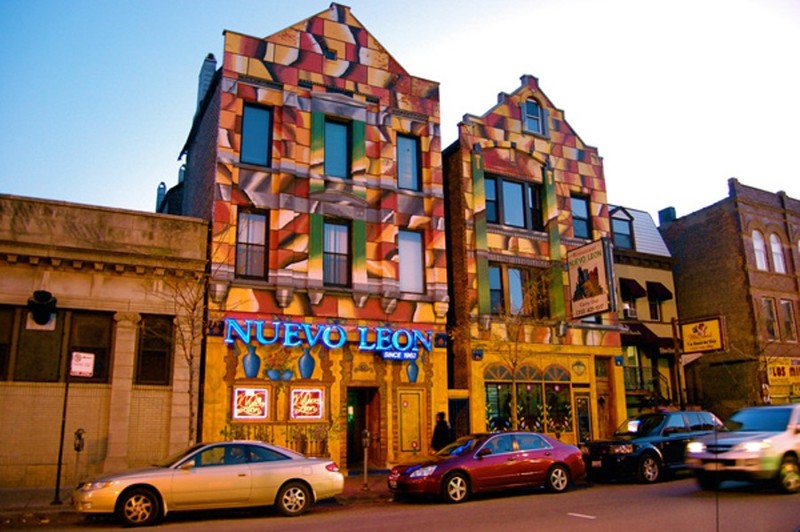
“Street Scene Chicago Illinois Pilsen ethnic Hispanic neighborhood Nuevo Leon restaurant mural on building” by Kim Karpeles/Alamy Stock Photo. 17 x 11.3 inches. 27 May 2003. Retrieved May 28th, 2019.
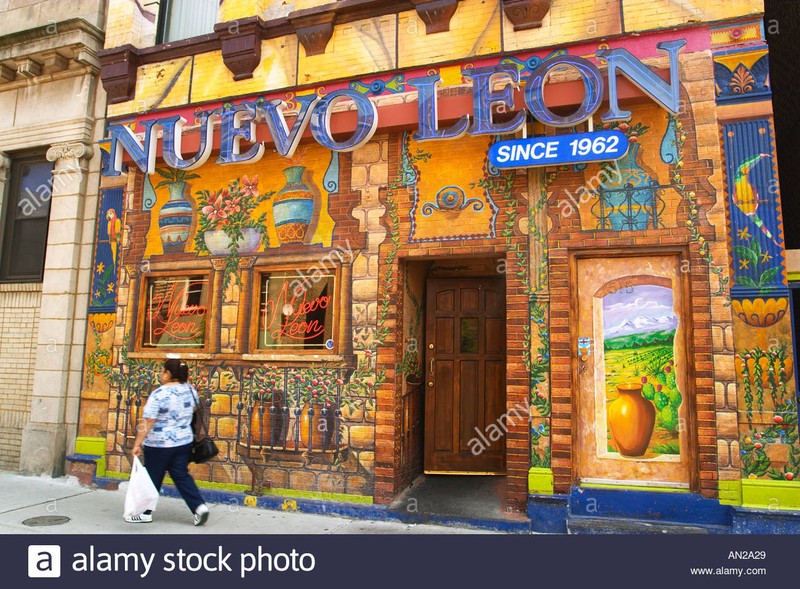
Nuevo Leon restaurant in Pilsen was destroyed in an extra-alarm fire Wednesday morning. By Byron Sigcho. December 2, 2015.
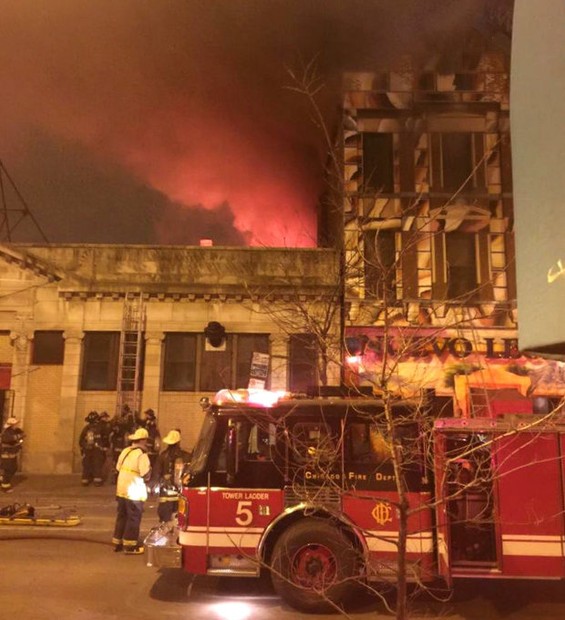
Menu Canton Regio. Image by Vanessa Garcia. May 21st 2019.
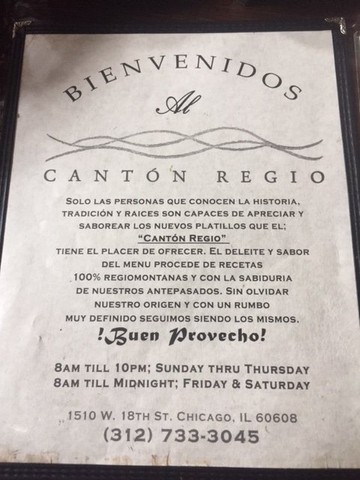
Wall Art inside Canton Regio. By Vanessa Garcia. May 21st, 2019.
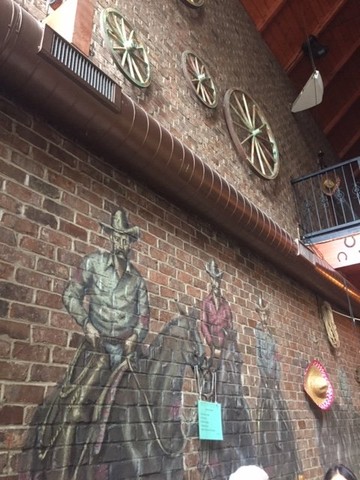
Backstory and Context
Text-to-speech Audio
During the early 20th century Pilsen was largely home to immigrants from Bohemia, a state in the Czech Republic. Although today Pilsen is largely known as a Mexican American community, its Bohemian history is made apparent through the architectural neighborhood. The Bohemian community constructed buildings that resembled similar styles to that of their homes in Bohemia. Then after World War 2 there was influx of Mexican immigrants in Chicago. According to the Pilsen History District, “When new immigrants from Mexico began moving into the neighborhood after World War 2, they [Mexican Immigrants] preserved the urban fabric created by their Bohemian predecessors while developing their distinct institutional life and culture” (Pilsen Historic District). This pattern of keeping the old while incorporating something new continues to be seen in the neighborhood of Pilsen. This is specifically relevant to Latinx history because in Pilsen we can observe how the Latinx identity has changed and continues to change throughout the decades. The pattern of new and old is specifically observed with the transition from Nuevo Leon to the new restaurant Canton Regio.
Nuevo Leon was located on 1515 W 18th Street. The restaurant was founded by Emeterio Gutierrez a Mexican American immigrant. Emeterio Gutierrez immigrated from Monterrey Mexico and settled in the neighborhood of Pilsen. He worked multiple jobs to support his family and one of which was working as a cook in the kitchen of his friend Jose Garza’s taco shop to make extra money for his family. In the early 1960s, Jose Garza wanted to leave the business, but Emeterio choose to buy the place from Garza to make into a business of his own. He dreamed of “living the American Dream” (Ruiz, Little Village Community Portal) and in 1962 became a business owner. Emeterio Gutierrez opened Nuevo Leon, which is the state he came from before arriving in Mexico. Although Emeterio founded the restaurant on his own, family dynamics were a key part in the ongoing success of the restaurant.
Emeterio’s three sons Antonio, Emeterio Jr, and Raul all helped their father with the restaurant and through this learned the ins and outs of running a business. Years later, new generations of Gutierrez continued to play a role in the development of the restaurant. Daniel Jr, grandson of Emeterio, started working in the restaurant after graduating high school where he continued to work for 21 years. As the years passed, the restaurant began to gain recognition from the local community and even from the entire city for being one of the best Mexican restaurants in Chicago. Emeterio credits this success to some key factors: having good workers, having good food that makes people want to come back, and knowing your clientele. Emeterio has maintained affordable prices for his food as he knew that many of his clients were local hard working people and thus wanted to provide a place where they could have a filling meal that was not too out of their budget (“Familiania Regiomontana”).
Emeterio’s family all helped work the business and slowly but surely Nuevo Leon became a center for Mexican families to come enjoy traditional Mexican food. The restaurant specializes in Northern Mexico such as refried beans, but what truly set them apart was their homemade flour tortillas. According to a local chef of the community named Ricky Bayless reported in an interview with the Chicago Tribune that it was “a reliable go-to for so many who live in Chicago, guardian of community and great northern Mexican flavors” (Hevrdejs 2015). However, people from all across the city came to enjoyed the delicious food provided by the restaurant. Indeed generations of families became loyal clientele and with the Gutierrez family running the restaurant it truly became a center for community gathering where customers started to become family.
Besides representing the Mexican culture with its delicious food, the building’s decor and art were very representative of Mexican culture. The interior was lined with art representing Mexican history and had colorful banners that were traditionally hung in towns during times of celebration in Mexico. In addition, the exterior of the restaurant was painted in murals a practice similar to what is now seen all over Pilsen. The murals filled with bright colors paint images of what a traditional home in Mexico would look like. Through their art and food they were really showing the establishment of Mexican culture in Pilsen.
This restaurant allowed for the immigrant community to feel at home in a place away from home by providing familiar foods and a place where their culture was celebrated. Soon the rest of Pilsen started to become largely populated by Mexican Americans and soon more restaurants started to rise. Although Nuevo Leon was not the only restaurant that has provided the community with Mexican food, it was one of the first restaurants that was established when the Mexican immigrant started moving in the 1960s. In fact in 1962, there was a fair on 19th street where both Czech and Mexican foods was served reflecting the change in the neighborhood with the established Czech community and the new incoming Mexican immigrants (“Pilsen Historic District -Hispanic Heritage Month). This was the same year Nuevo Leon was opened. Therefore, Nuevo Leon was a symbol of the initial movement of Mexican immigrants into the neighborhood and how the Mexican population would begin to leave their imprint on the community. Furthermore, Nuevo leon represented the continued establishment of the Mexican American community in the south side of Chicago as it continued to serve the community for 54 years.
However, in 2017 the beloved restaurant burned down after a failure in electrical wiring. This was a shock to the community and it was even more devastating to the Gutierrez family who had invested so much of their lives into this restaurant. Beyond that this restaurant was their home and after the fire the structure of the building broke down.
There was discussion about rebuilding the entire restaurant, but eventually it was decided to not do so. Instead Emiterio’s grandson, Daniel Gutierrez Jr, decided to open his own restaurant across the street called Canton Regio. At first, people assumed it would be very similar to the original restaurant, but they soon realized it was not. In an interview with Daniel Gutierrez Jr, he said he kept maybe 20% of the original menu and decided to focus much more on meats as the main dish as opposed to full meals like Nuevo Leon. Canton Regio still is very symbolic of Mexican culture, but has distinguished itself with creating something new. However, some parts of the old still remain. The menus still have the same cover as the original restaurant and still serve handmade flour tortillas. The interior of the restaurant is also very reflective of Mexican culture, but with a more rustic design. It is a two story restaurant and at the top of the stairs sombreros are hanging. The brick walls have paintings of men on horses which is symbolic of the country life in Mexico. This change from Nuevo Leon to Canton Regio is symbolic of the shift in the community from family units to second generation students coming back to the neighborhood and changing it. They are now placing their own twist on the community similar to Emitario. But also similar to the Bohemian and Mexican transition, they are still keeping parts of the old and creating something new.
Although Pilsen continues to change, it continues to see similar patterns of when it first became inhabited. A home to new comers who continue to leave their imprint on the community, while integrating the history of what has already been established. This is especially relevant to Latinx history because the Latinx community has seen specific changes to the identity of its own community. From being inhabited by large families to now more young, single Latinx second generation students. This new generation return to their neighborhood, but bring and integrate into the community styles and new restaurant ideas that they have learned from living outside of the community. Here we see how the Latinx identities of Latinos in the United States, specifically in Chicago, continues to evolve with each generation.
Sources
Familia regiomontana en Chicago celebra las bodas de oro de su restaurante. February 28, 2012. Accessed
June 08, 2019. http://archive.lavozarizona.com/lavoz/ent/articles/2012/02/28/20120228familia-regiomontana-en-chicago-celebra-las-bodas-de-oro-de-su-restaurante.html.
Hevrdejs, Judy. “Nuevo Leon Served Many Chicagoans a First Taste of Mexico's Cooking.”
Chicagotribune.com, 3 Dec. 2015,
www.chicagotribune.com/dining/ct-nuevo-leon-gave-many-first-taste-of-mexico-20151202-story.html.
“Pilsen Historic District -- Hispanic Heritage Month -- National Register of Historic Places Official
Website--Part of the National Park Service.” National Parks Service, U.S. Department of
the Interior, 0AD, www.nps.gov/nr/feature/hispanic/2010/pilsen_historic_district.htm.
Ruiz, Camila. “A Home Far Away from Home: A Look into the Gutierrez Family's Nuevo Leon
Restaurant in Little Village.” Little Village Community Portal, 26 Sept. 2018,
littlevillagecommunityportal.org/a-home-far-away-from-home-a-look-into-the-gutierrez-familys-nuevo-leon-restaurant-in-little-village/.
